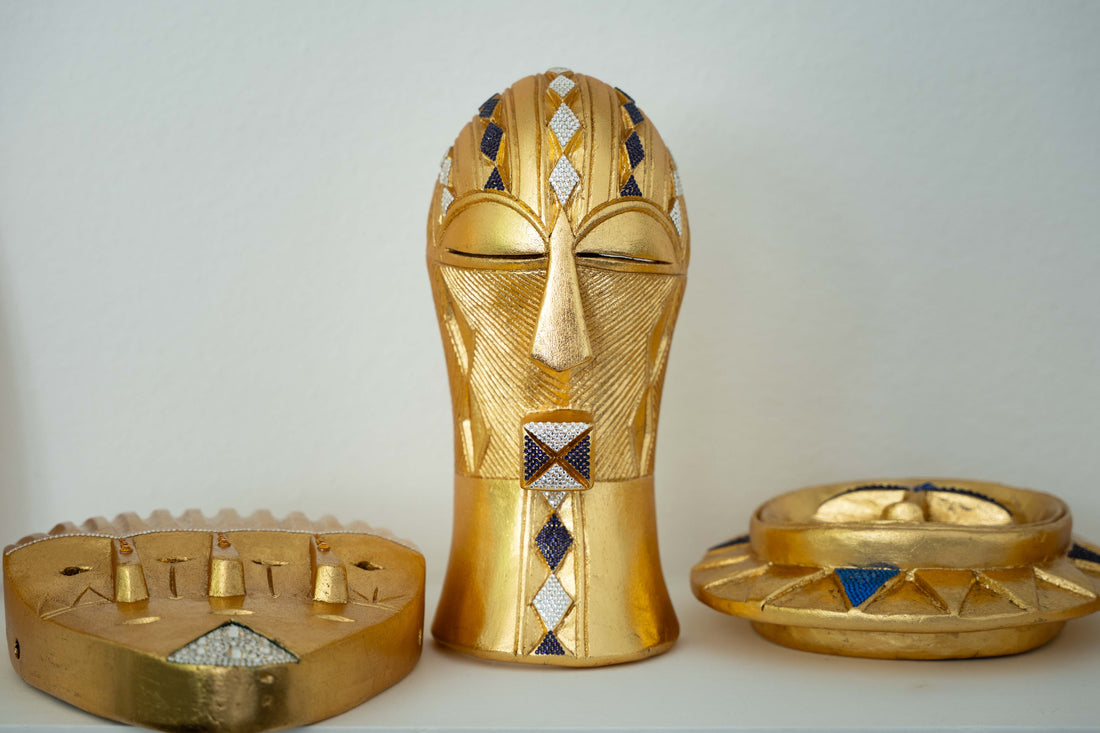
Songye Kifwebe Masks: Power, Order & Visual Magic
Share
The Power of Lines: The Secret of Songye Kifwebe Masks
There are works of art that captivate the viewer in an immediate, almost instinctive way. The Kifwebe mask of the Songye people from the Democratic Republic of Congo is undoubtedly one of them. With its rhythmic grooves, cubist form, and intense gaze, it radiates a presence that is hard to resist. But this mask is more than a masterpiece of abstract art; it is an instrument of power, a spiritual tool, and a mirror of the cosmological beliefs of its creators.
Guardians of Order: The Bifwebe Society
To understand the Kifwebe mask, one must know the organization that produced it: the Bifwebe Society. This influential secret society played a central role in Songye social and political life. Its task was to maintain social order, enforce judicial rulings, and preserve the balance between the village community and the spirit world. The Bifwebe members were both guardians of the law and masters of the spiritual, possessing a secret knowledge known as Bwanga. The masks were their most powerful means of expression.
Written in Lines: The Visual Language of the Kifwebe Mask
The most striking feature of the Kifwebe mask is undoubtedly the fine grooves (striations) that cover its entire surface. These lines are not merely decorative but a code with profound symbolic meaning.
-
The Hypnotic Grooves: They can symbolize the path of the ancestors, the stripes of a zebra (an animal that walks between worlds), or the cosmic energy that permeates everything. Their rhythmic arrangement creates a visual, almost hypnotic effect that underscores the supernatural power of the mask.
- The Code of Colors:
-
White: Stands for purity, peace, light, and a positive connection to the spirit world.
-
Black: Symbolizes the night, the hidden, and the potentially dangerous aspects of spiritual power.
- Red: Is used less frequently and represents rites of passage, blood, courage, but also danger.
Male vs. Female: A Question of Form and Vision
Within the Kifwebe tradition, a clear distinction is made between male and female masks, whose forms reflect their respective functions:
-
The Male Mask (Kilume): This mask is characterized by aggressive, angular features, a high crest on the head, and often protruding mouth and eye areas. It embodies power, strength, and authority. The dancers of these masks often performed in a wild and uncontrolled manner to inspire fear and demonstrate the power of the Bifwebe.
- The Female Mask (Kikashi): This mask is designed to be softer and more harmonious. Its shapes are rounder, the crest is flat or completely absent, and the surface is predominantly white. It represents tranquility, inner vision, fertility, and the positive, nurturing aspects of the spirit world. Her dances were gentle and controlled, and her purpose was ritual purification and the promotion of peace.
The Kifwebe mask of the Songye is a prime example of how form and function are inextricably linked in traditional African art. It is at once an object of breathtaking graphic beauty and a complex tool for maintaining social and spiritual balance. Its austere yet dynamic aesthetic has made it an iconic collector's item found in the most significant museums and galleries around the world. It reminds us that true art has the power to make invisible orders visible and to tell a story of power, vision, and community.
